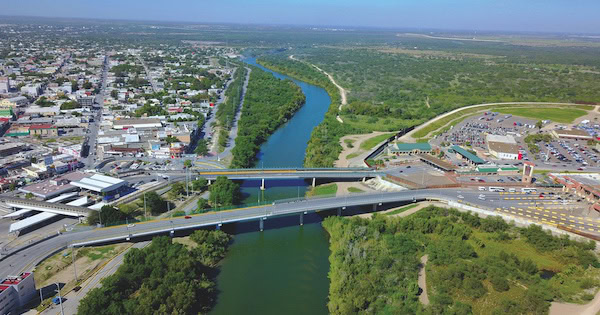By Anne Cosgrove
From the May/June 2025 Issue
Trade movement across the U.S.-Mexico border remains a cornerstone of North American commerce, though it faces mounting challenges stemming from shifting trade policies, infrastructure constraints, and geopolitical tensions. Despite these headwinds, the bilateral trade relationship continues to thrive, underpinned by deep manufacturing integration and strategic nearshoring trends.
Mexico has solidified its position as the United States’ top trading partner, surpassing China in 2023. In February 2025 alone, U.S.-Mexico trade reached $68.4 billion, marking a 2% year-over-year increase. The Port of Laredo, Texas, remains a critical hub, handling $27.8 billion in commerce that month. Key exports include vehicles, auto parts, computers, and electrical machinery, reflecting the deep interdependence of both nations’ manufacturing sectors.
New levies, including a 25% tariff on steel, aluminum, and certain automotive imports, have disrupted supply chains and increased costs for manufacturers. While the United States-Mexico-Canada Agreement (USMCA) offers some protection, many companies are grappling with the complexities of compliance and the evolving trade policies.


Supply Chain Realignment and Nearshoring. Amid global supply chain disruptions and escalating trade tensions with China, nearshoring has emerged as a strategic priority for U.S. companies. By relocating manufacturing closer to home, businesses aim to reduce dependency on distant suppliers and mitigate risks. This shift has led to increased demand for industrial real estate and warehousing along the U.S.-Mexico border, particularly in regions like El Paso, Texas, which has become the fifth-largest manufacturing hub in North America.
The automotive industry is one that bears consideration amidst this environment. Mexico exports nearly three million vehicles to the U.S. annually. It also supplies 43% of the auto parts and components imported to the U.S. Despite the imposition of new tariffs, Mexico’s auto parts production increased by 2% compared to the same period in 2023, with forecasts predicting 3.35% growth in 2025.
COSTEP, the Council for South Texas Economic Progress, represents the Rio South Texas Region. This region is comprised of seven counties of deep South Texas that share the border with neighboring cities in the northern Mexican state of Tamualipas. The seven counties, Webb, Jim Hogg, Zapata, Starr, Hidalgo, Willacy, and Cameron Counties are a mix of urban and rural with growth opportunities abound.
Industries well represented in this region and with successful operations are: automotive, aerospace, advanced manufacturing, agriculture, cold storage and food processing, renewable energy, and logistics. In the region, aerospace, automotive, and renewable energy continue to grow and expand.
Advantages to locate here on the U.S./Mexico border are several, one of which is physical proximity to their headquarters while remaining in the U.S. or Mexico. If a company from Mexico establishes operations in the U.S., locating on the U.S./Mexico border keeps that operation as close to home as possible while enjoying any advantages of U.S.-based operations. The air and highway connectivity facilitates movement of goods and services, not to mention officials and employees from headquarters to facilities here on the U.S./Mexico border. Other advantages are that the area is known for a bilingual workforce, which overcomes any language and sometimes cultural barriers that may arise from an expansion into a neighboring country.
Outlook and Strategic Consideration. The U.S.-Mexico trade relationship remains robust, driven by mutual economic interests and manufacturing integration. Stakeholders on both sides of the border will benefit from continued prosperity of this vital economic corridor. As companies adapt to the evolving trade landscape, strategic investments in nearshoring, infrastructure, and compliance will be essential to navigate the complexities of U.S.-Mexico trade in 2025 and beyond.




